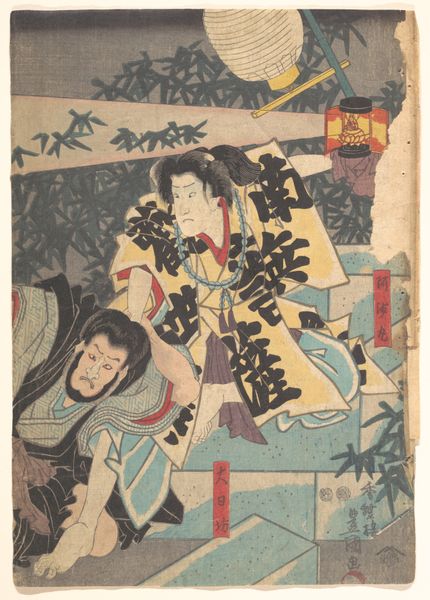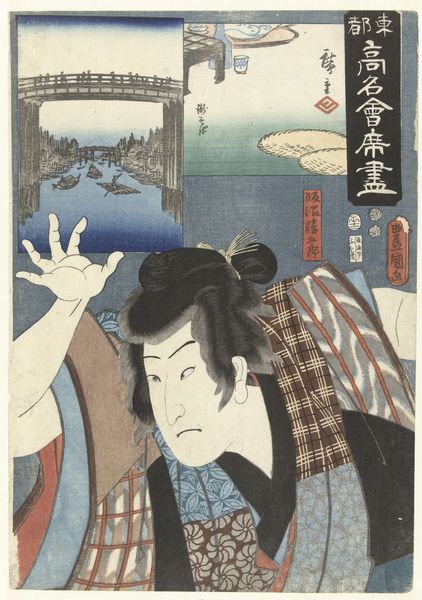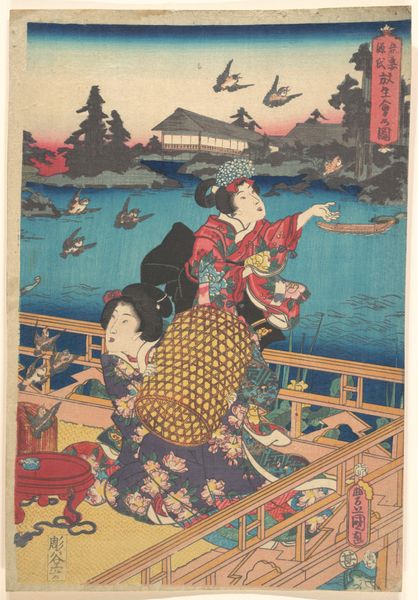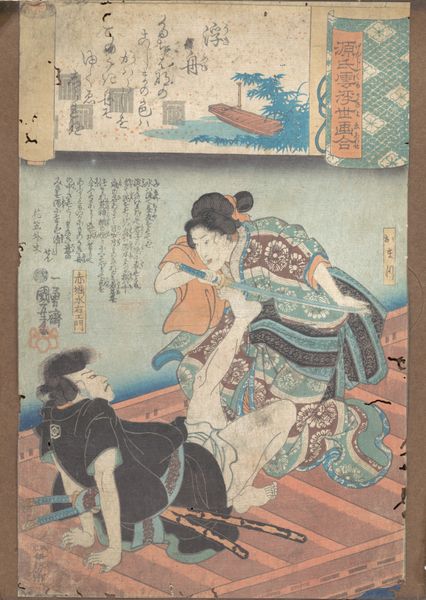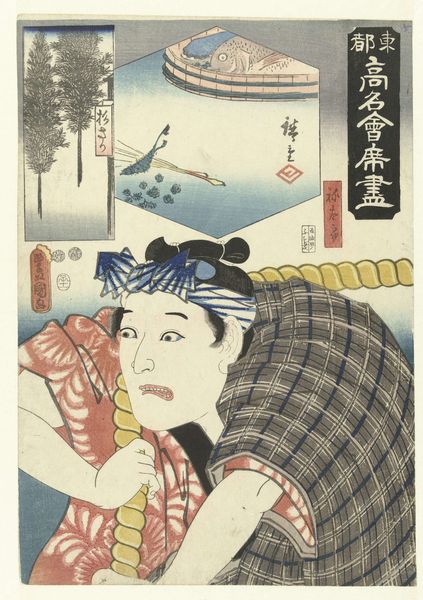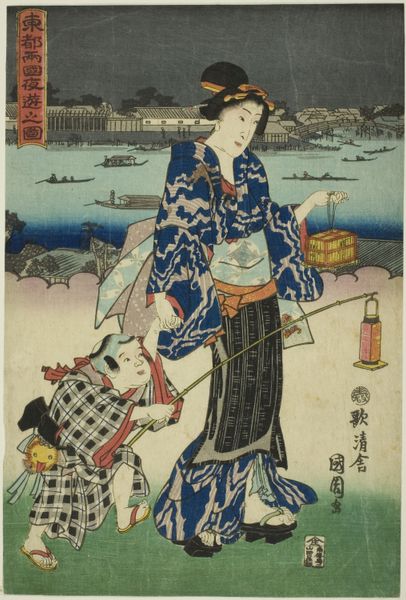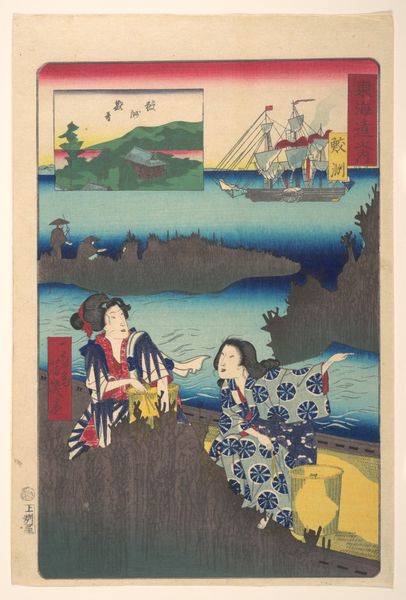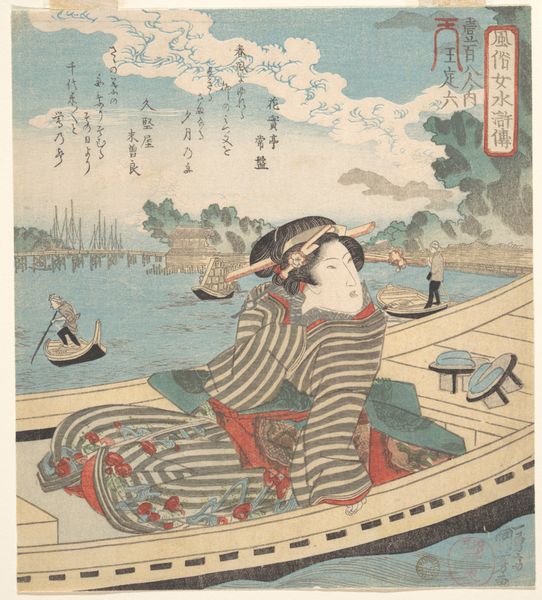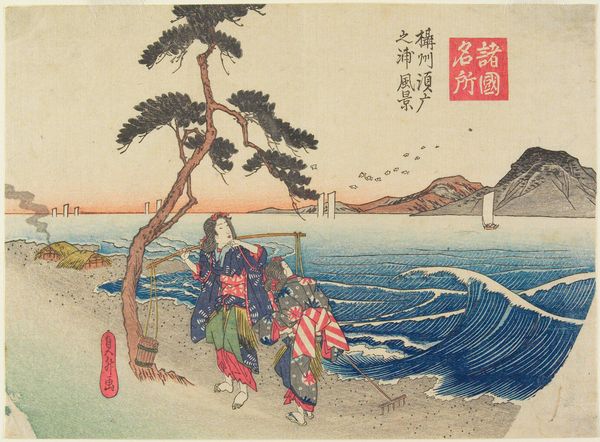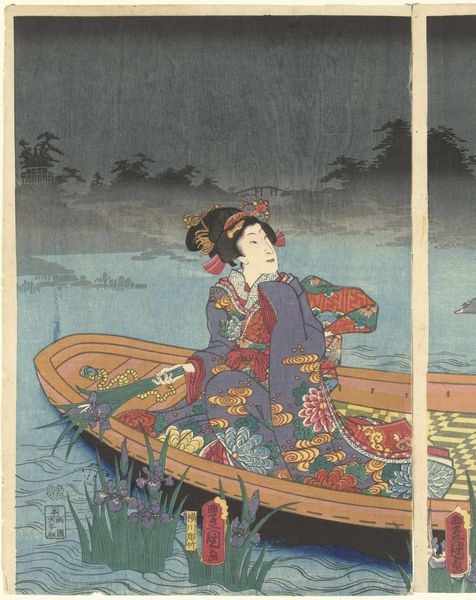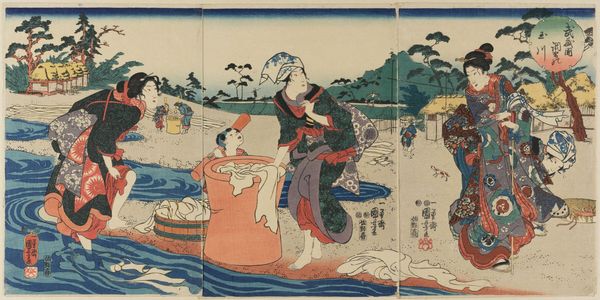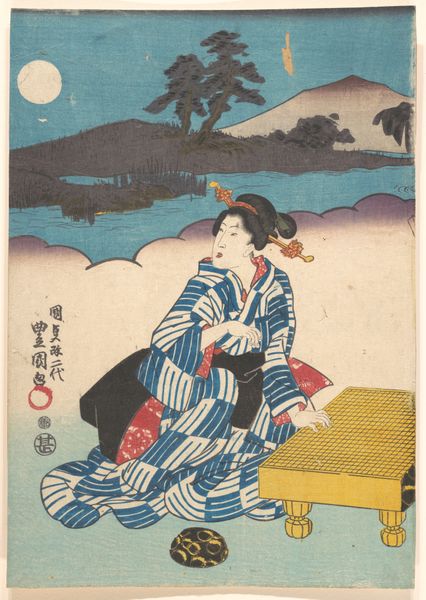![['Nun Seigen and ferryboat', 'Seven calligraphic models for each character in the kana syllabary'] by Utagawa Kunisada](/_next/image?url=https%3A%2F%2Fd2w8kbdekdi1gv.cloudfront.net%2FeyJidWNrZXQiOiAiYXJ0ZXJhLWltYWdlcy1idWNrZXQiLCAia2V5IjogImFydHdvcmtzLzQyMTdkODgwLTI1MzQtNGJiZS04ZDE1LWE1Zjk3Yzg4MDRiYi80MjE3ZDg4MC0yNTM0LTRiYmUtOGQxNS1hNWY5N2M4ODA0YmJfZnVsbC5qcGciLCAiZWRpdHMiOiB7InJlc2l6ZSI6IHsid2lkdGgiOiAxOTIwLCAiaGVpZ2h0IjogMTkyMCwgImZpdCI6ICJpbnNpZGUifX19&w=3840&q=75)
['Nun Seigen and ferryboat', 'Seven calligraphic models for each character in the kana syllabary'] 1856
0:00
0:00
utagawakunisada
Rijksmuseum
print, woodblock-print
#
portrait
# print
#
asian-art
#
landscape
#
river
#
ukiyo-e
#
woodblock-print
#
genre-painting
Dimensions: height 345 mm, width 230 mm
Copyright: Rijks Museum: Open Domain
Curator: This evocative woodblock print, dating from 1856, presents a striking composition. Titled "Nun Seigen and Ferryboat" along with "Seven Calligraphic Models for Each Character in the Kana Syllabary", the piece is by Utagawa Kunisada and currently resides at the Rijksmuseum. Editor: My initial reaction is that the image conveys a sense of serene, almost melancholic distance, a cool tonality despite the suggested narrative energy with two characters and text that implies the flow of ideas across a wide spectrum. Curator: Well, considering the print's creation during the late Edo period, one can appreciate Kunisada's masterful manipulation of the woodblock technique to depict the subtle gradations of the sky and the water's surface. Notice how the division between foreground and background are blurred with the use of tonality that brings foreground characters closer. It showcases a nuanced understanding of materials and process and the use of cheap readily made pigments in Japan. Editor: Yes, but beyond the purely technical aspects, the figures themselves tell a story, don't they? The nun, seemingly resigned or contemplative, juxtaposed with the ferryman's determined labor. It speaks to a social hierarchy and division, labor and service. Water imagery often carries profound spiritual meaning, reflecting change and continuity in this case. Ferryboat scenes carry symbols for carrying those between states of mortality, and a state of life beyond life and earthly suffering. Curator: It is equally intriguing how this print, mass produced in comparison to others, utilizes figuration with gendered meaning that served entertainment function in Ukiyo-e that has social political dimensions in popular media. The medium, itself and its creation, reflect Japan at that time, where craftsmanship existed within specific economic framework Editor: The calligraphic elements above definitely add another layer, almost a meta-commentary about art itself – models and frameworks imposed upon a lived scene. We see those patterns today in digital creation! They have shifted over a period of time into social consciousness. Curator: Indeed. And recognizing the constraints of this commercially produced work allows us to appreciate the ingenuity and resourcefulness inherent in Kunisada's practice. Editor: Considering that, I come away now seeing how that melancholy stems from the limitations imposed on the artist – a challenge to both aesthetic vision and deeply encoded cultural symbols.
Comments
No comments
Be the first to comment and join the conversation on the ultimate creative platform.
